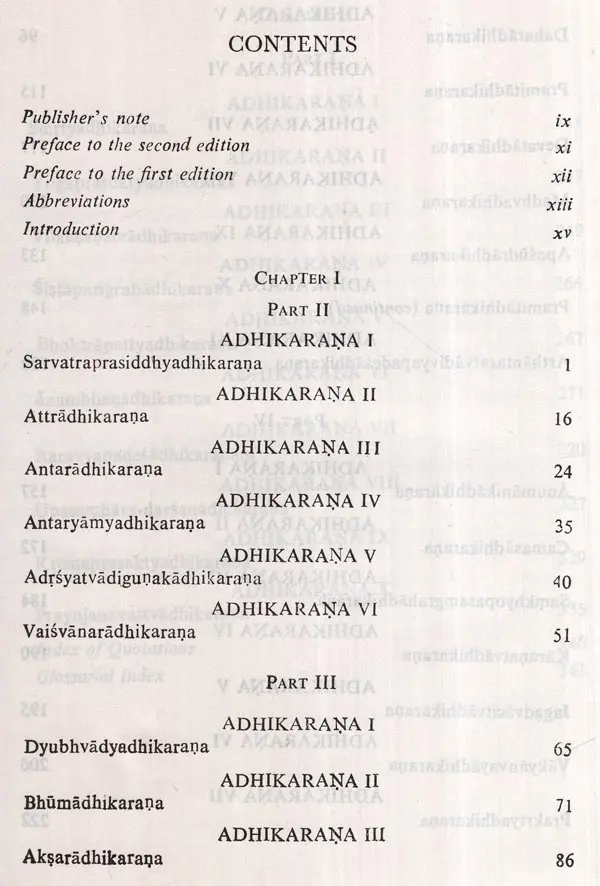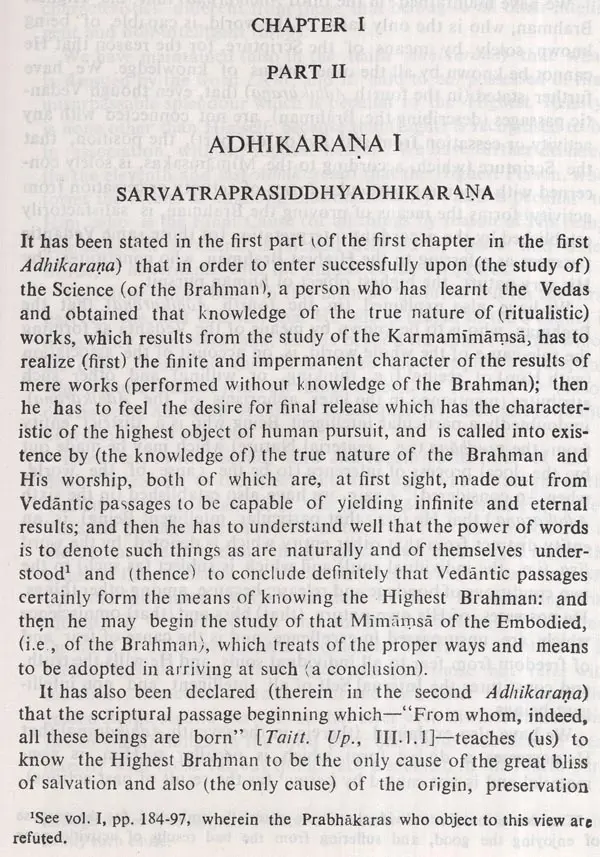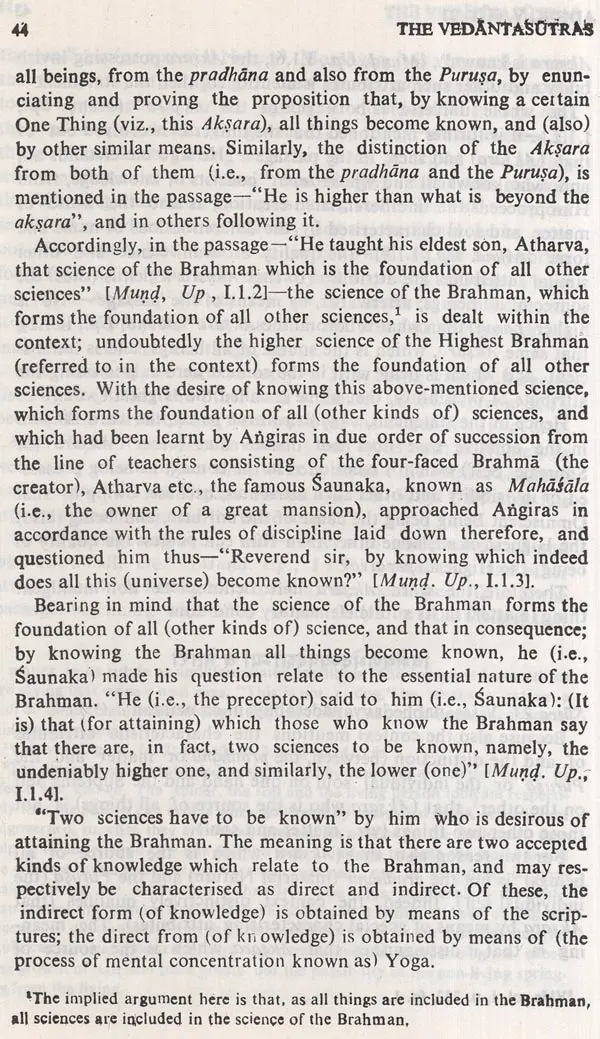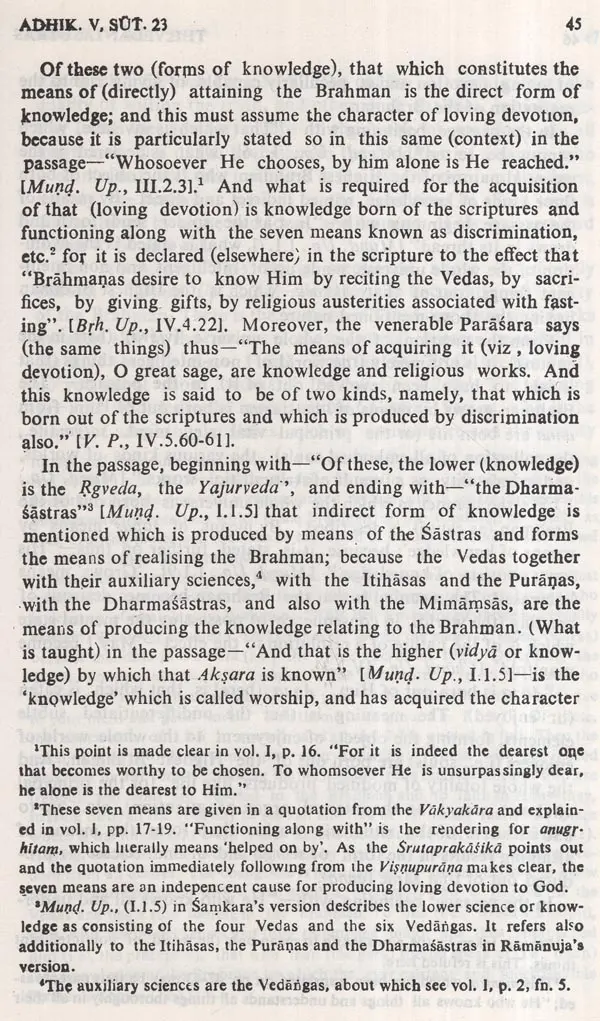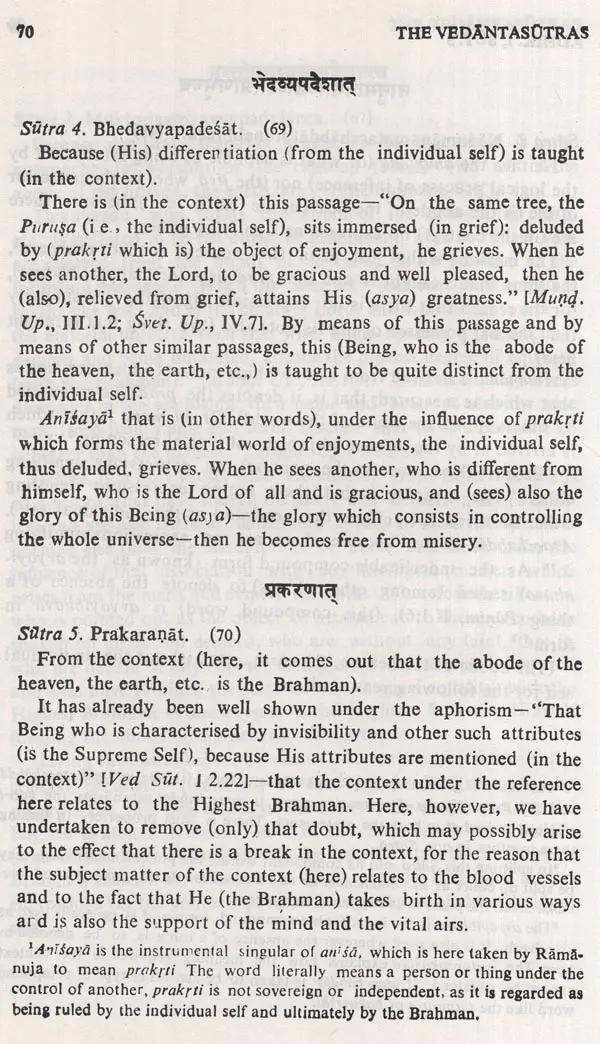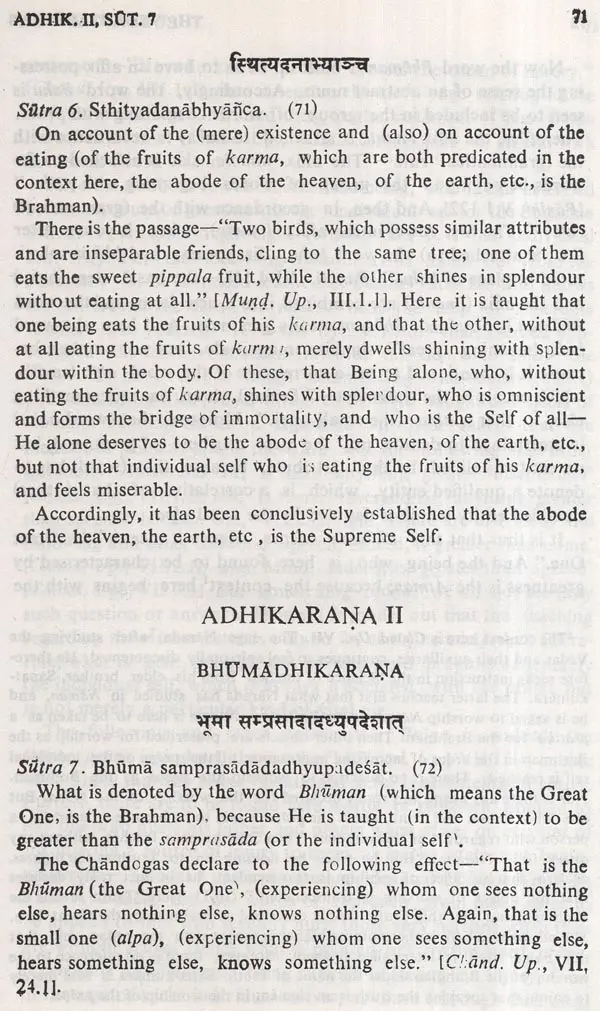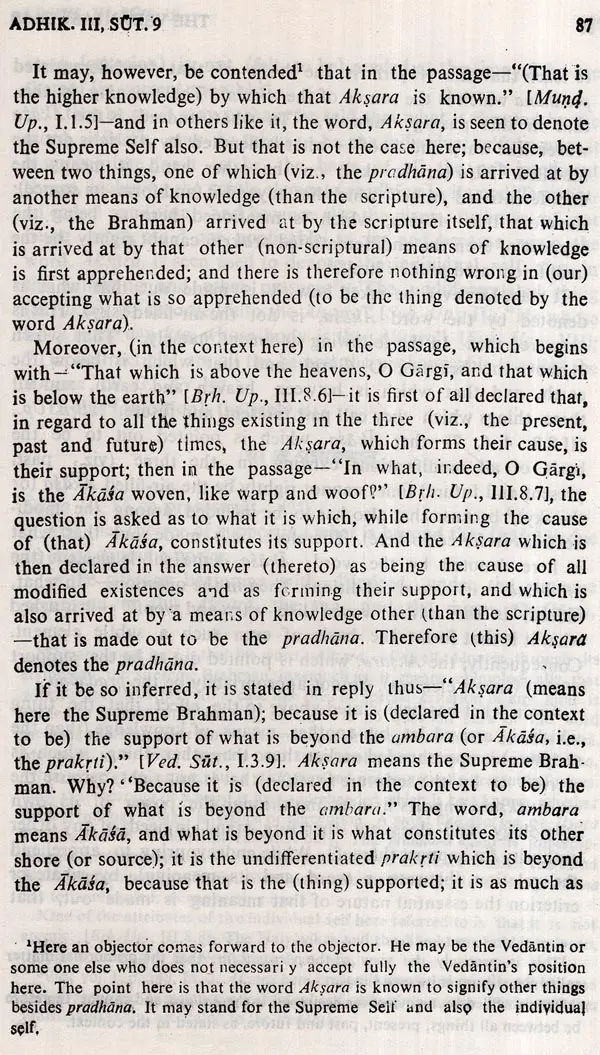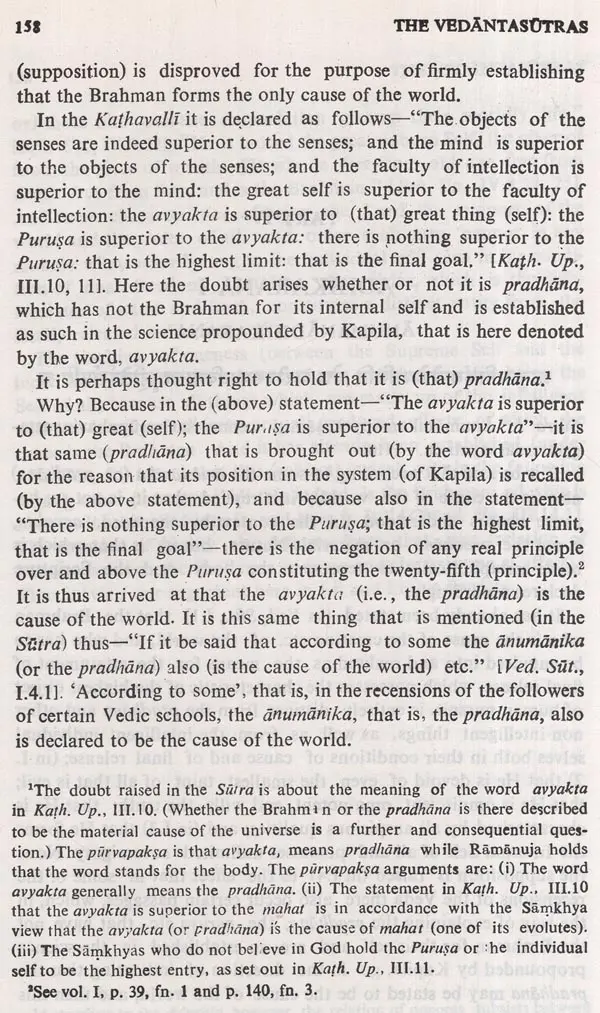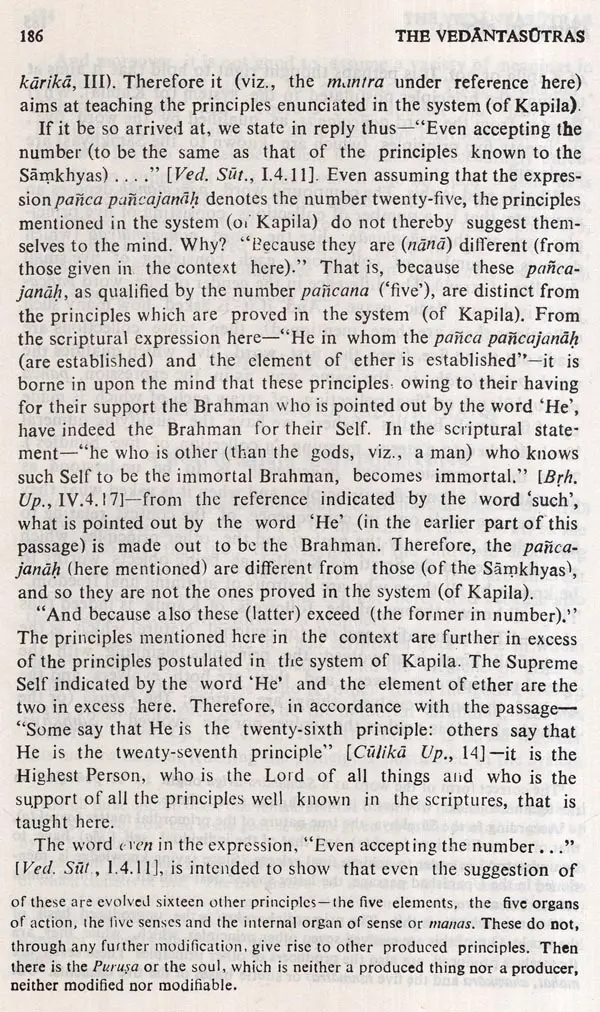
The Vedantasutras with the Sribhasya of Ramanujacarya (Volume 2 - An Old and Rare Book)
Book Specification
| Item Code: | UAQ984 |
| Author: | M. Rangacharya and M. B. Vardaraja Aiyangar |
| Publisher: | MUNSHIRAM MANOHARLAL PUBLISHERS PVT LTD |
| Language: | English |
| Edition: | 2002 |
| ISBN: | 8121504503 |
| Pages: | 400 |
| Cover: | HARDCOVER |
| Other Details | 9.00 X 5.50 inch |
| Weight | 620 gm |
Book Description
The present work Sribhasya, is the commentary on the Vedantasutras by Sri Ramanujacarya. Ramanuja wrote the commentary in a context which necessitated not merely the exposition of the tradition he represented, but also the refutations of the viewpoints of other philosophers like Sri Samkara, Bhaskara and Yadava.
The Sribhasya has a total of 157 adhikaranas with numerous aphorisms. The present volume contains 11 adhikaranas in which Ramanuja enters with penetrating insight into the detailed study of the Vedantasutras.
According to him, the Supreme Brahman "the Highest person is the creator, sustainer and destroyer of the universe, and he is distinct from matter the soul."
It is his view that God is omniscient and omnipotent and who is wholly pure and full of all auspicious qualities. Ramanuja successfully explains the above viewpoints with his authentic exposition and interpretation of the Upanisads. The analytical outline given in the book lucidly explains all these aspects in the present volume.
M. Rangacharya (b. 1861) was Professor of Sanskrit and Comparative Philosophy at Presidency College, Madras. He wrote a number of books out of which translation of Sribhasya of Ramanujacarya in English and The Hindu Philosophy of conduct being Lectures on the Bhagavadgita (3 vols.), stand out foremost. He passed away in 1916.
M.B. Varadaraja Aiyangar was a close relative and associate of Professor M. Rangacharya. He assisted Professor M. Rangacharya and helped him in the translation of Sribhasya of Ramanujacarya in English and later helped Sri M.R. Sampatkumaran, son of M. Rangacharya, in bringing out the Hindu Philosophy of Conduct being Lectures on the Bhagavadgita. He passed away in 1942.
This volume contains 35 adhikaranas with numerous aphorisms. Ramanuja in the present volume explains that the Highest Brahman alone in the material and instrumental cause of the universe and also is responsible for the creation, preservation and destruction of the universe. Also the highest Brahman is full of all auspicious qualities and is distinct from the innumerable individual selves and the non-intelligent things. Ramanuja logically explains quoting from various Vedantic passages and also interprets the Upanishadic statements in sway to prove that the Supreme Brahman is none other than Narayana. He successfully, refutes the arguments of the Purvapaksins and also of the Samkhyas and other schools of thought and establishes that the worship of the Supreme Brahman is the means to attain immortality and He alone is the refuge for the selves. The Introduction at the beginning of the book gives in details the various points that has been taken from discussion in the present volume.
The first part of the first chapter of the Vedantasutras is gene rally concerned to show the Brahman as the cause of the world. Thereafter, in the remaining three parts of the chapter, it is sought to be proved that nothing other than the Brahman can be the cause of the world. Alternative theories about the cause of the world are taken up and refuted.
Ramanuja begins his commentary on the second part of the chapter with a brief summary of the teachings of the first part. He reminds us that ritualistic works grant transitory results and that knowledge about and worship of the Brahman yields infinite and eternal results. Those who understand this from a study of the ritualistic part of the Vedas begin to feel the desire for final release from the circle of births and deaths as the highest of object of human pursuit Accordingly, they try to know and worship the Brahman.
Vedantic passages form the means of knowing the Brahman. Scriptural texts, such as "From whom, indeed all these beings are born" [Taitt. Up., III.1] etc.. establish the Highest Brahman alone to be the cause of the great bliss of salvation and also the only cause of the origin, preservation and destruction of the whole world. The Brahman has also been shown to be distinct from the innumerable individual selves and the prakrti (i.e., non-intelligent things). Moreover, the Brahman is also the Internal Self of this world made up of the prakrti and the individual selves.
**Contents and Sample Pages**

